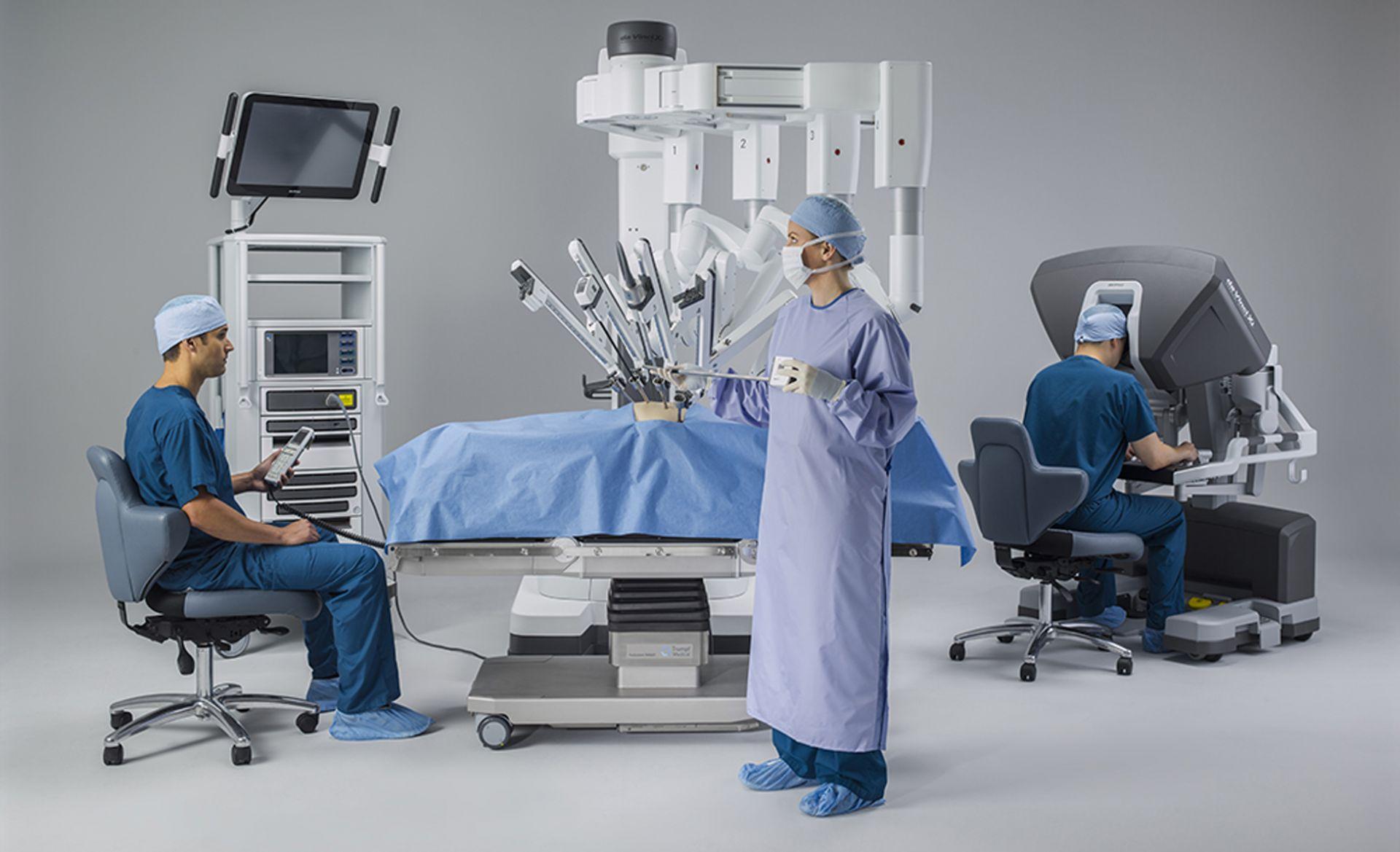What is minimally invasive surgery?
Minimally invasive surgery includes traditional and robotic-assisted laparoscopy (robotic surgery in short). These are surgical techniques that ensure the completion of abdominal surgery through very small incisions using a camera/screen and special tools. The benefits include:
- Much less blood loss
- Lower chance of infections in the surgical wound or incisional hernia
- Minimisation of postoperative pain
- Shorter recovery for the patients
- Better cosmetic outcome in the areas of incision
How does the robotic system work?
The first steps of surgery are common in the traditional laparoscopy and robotic surgery. The gynaecologic surgeon creates very small abdominal incisions through which he inserts air, the camera and very thin tools. The difference in robotic surgery is that the tools are connected to the arms of the robot and they follow the doctor’s moves in a console inside the operating room. During the surgery the gynaecologic surgeon sees the inner abdominal part zoomed in a three-dimensional screen of high definition which is part of the console.
Who performs the surgery after all? The robot or the doctor?
The robot is programmed to make decisions or guide the surgery. Its goal is to follow instructions from the gynaecologic surgeon with much more gentle movements than the human hand. Throughout the operation, the doctor has the ultimate complete control of the surgical operation, which provides the maximum accuracy possible through the technological advantages possessed by the robot.
What happens after robotic surgery?
When the surgery is finished, the surgical tools are disconnected from the arms of the robot and the air is removed from the abdominal area. The gynaecologic surgeon closes the small incisions of the skin with special stitches. Then, the patient is transferred to the recovery room in which she stays and is monitored for some time. She may sometimes complain for sleepiness or nausea, symptoms associated with the effects of anaesthesia. As in traditional laparoscopy, postoperative recovery after robotic surgery is very short and the patient can walk and eat a few hours later. Depending on the type of surgery and her history, in most cases the patient can return home on the same day or in the next morning.
What should a woman expect during the first days of recovery?
Just like in traditional laparoscopy, a few days after a robotic surgery the patient might mention a “pulling” sensation or mild pain in the incision areas. Moreover, she might complain of shoulder or back pain, which is caused by the small amount of air remaining in the abdomen. The above symptoms are treated with typical pain relief medication and usually they full resolve within 4-5 days. The patient should avoid lifting objects heavier than 3 kg as well as sexual activity for 2 weeks. In the case of hysterectomy, this time period is longer.
How does robotic surgery outweigh traditional laparoscopy?
The main benefits of robotic surgery in comparison with traditional laparoscopy are:
- Better visibility due to 3D screen which allows estimation of depth
- Higher range of movements compared to the restricted rotation of the human hand
- Increased stability of surgical tools, which eliminates the slight tremor of human hand
- More accuracy of surgical movements as a result of the above
- Seated position of the gynaecologic surgeon and general ergonomics that minimise physical fatigue, especially in surgeries with longer duration
The benefits of a robotic surgery are even more important in demanding surgeries, such as oncology surgeries, the removal of enlarged uterus (total hysterectomy) or fibromyoma, the treatment of extensive endometriosis and the lysis of multiple adhesions.
Which surgeries can be performed robotically?
Almost all gynaecologic surgeries can be performed robotically. The most important of them are:
- Removal of uterus (total hysterectomy) for benign reasons
- Removal of uterine fibromyomas
- Removal of the fallopian tubes or/and the ovaries
- Removal of ovarian cysts
- Surgical treatment of endometriosis
- Surgical treatment of endometrial cancer
- Surgical treatment of early-stage cervical cancerunder conditions
- Surgical treatment of early-stage ovarian cancer
- Surgical treatment of advanced ovarian cancer after neoadjuvant chemotherapy under conditions
It should be highlighted that specialised training and certification of the gynaecologic surgeon on robotic surgeries is more than necessary in order to safely perform such surgeries. Ask us about our experience!











